Navigating the seas of commerce can be a daunting task for businesses involved in global trade. The choice between bulk carriers and container ships plays a pivotal role in shaping the efficiency, safety, and economic viability of cargo transport. Each vessel is tailored to specific cargo transport needs, bringing forth a myriad of considerations for industries and stakeholders.
Cargo ships are the backbone of global trade, facilitating the transportation of goods across vast distances and connecting countries and continents. The importance of these ships is reflected in the sheer volume of goods that are transported by sea each year. According to the United Nations Conference on Trade and Development (UNCTAD), around 80% of global trade by volume and over 70% by value is carried by sea. With such a significant amount of trade being carried by cargo ships, businesses need to understand the different types of ships available and their respective advantages and disadvantages.
In this article, we will provide a comprehensive guide to navigating the seas of commerce, covering the different types of cargo ships, their capabilities, and the factors to consider when choosing the right vessel for your cargo transport needs. Whether you are a business owner looking to transport goods across the ocean or a logistics professional seeking to streamline your operations, this guide will provide you with the knowledge and insights you need to navigate the complex world of cargo shipping.
History of Cargo Shipping
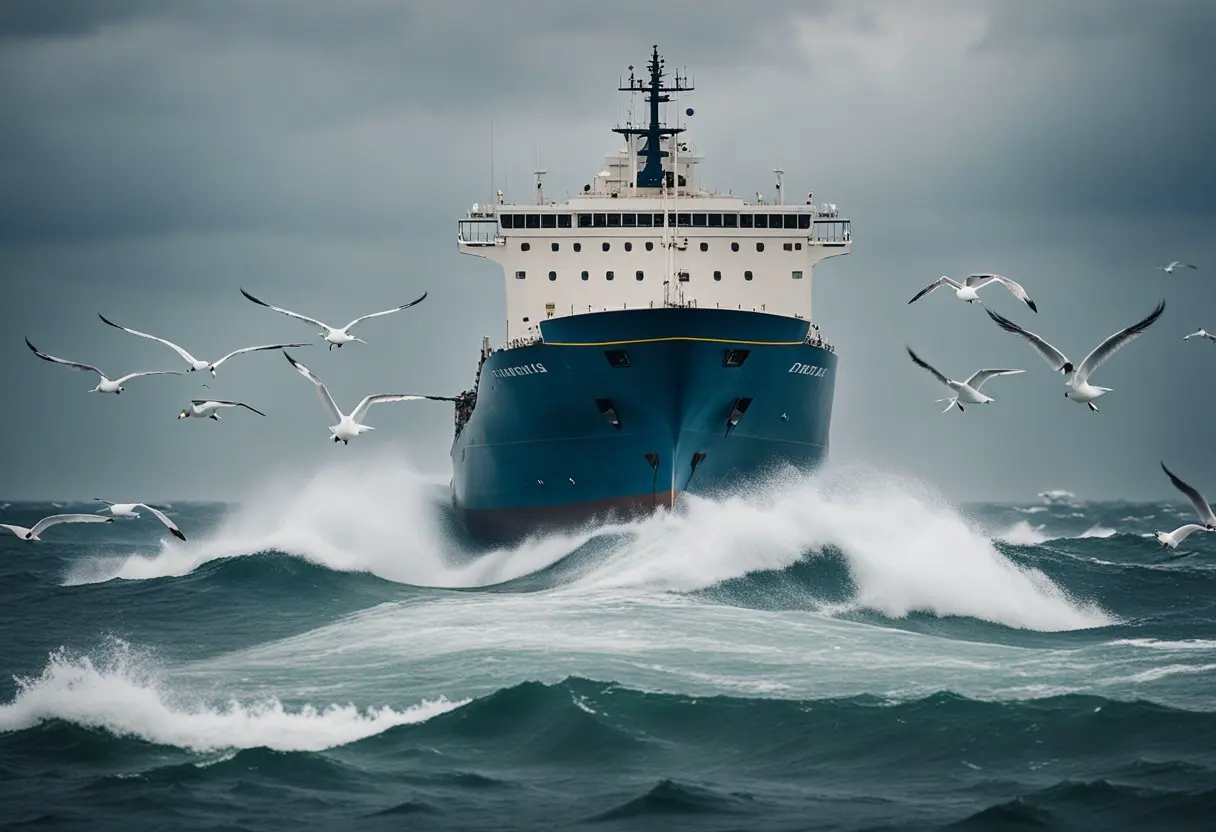
Cargo shipping has been an essential part of global trade for centuries. The history of cargo shipping dates back to ancient times when goods were transported by sea, river, and canal. The first recorded cargo ship was the Khufu ship, built around 2500 BCE in Egypt, which was used to transport goods along the Nile River.
During the Middle Ages, European traders began to use cargo ships to transport goods across the Mediterranean Sea. The Hanseatic League, a confederation of merchant guilds and their market towns in Northern Europe played a significant role in the development of cargo shipping during this time.
In the 16th century, the advent of the Age of Exploration led to the discovery of new trade routes and the expansion of cargo shipping. The Spanish and Portuguese were the first to establish global trade networks, transporting goods such as spices, silk, and precious metals from Asia and the Americas to Europe.
The Industrial Revolution in the 18th and 19th centuries brought significant changes to cargo shipping. The development of steam-powered ships and the expansion of canal networks made it possible to transport goods faster and more efficiently. The introduction of refrigeration also allowed for the transportation of perishable goods such as meat and dairy products.
Today, cargo shipping continues to play a vital role in global trade. The shipping industry has become more advanced with the use of technology such as GPS tracking and automated cargo handling systems. The largest cargo ships can now transport over 20,000 containers, making it possible to move massive amounts of goods across the world.
Types of Cargo Ships
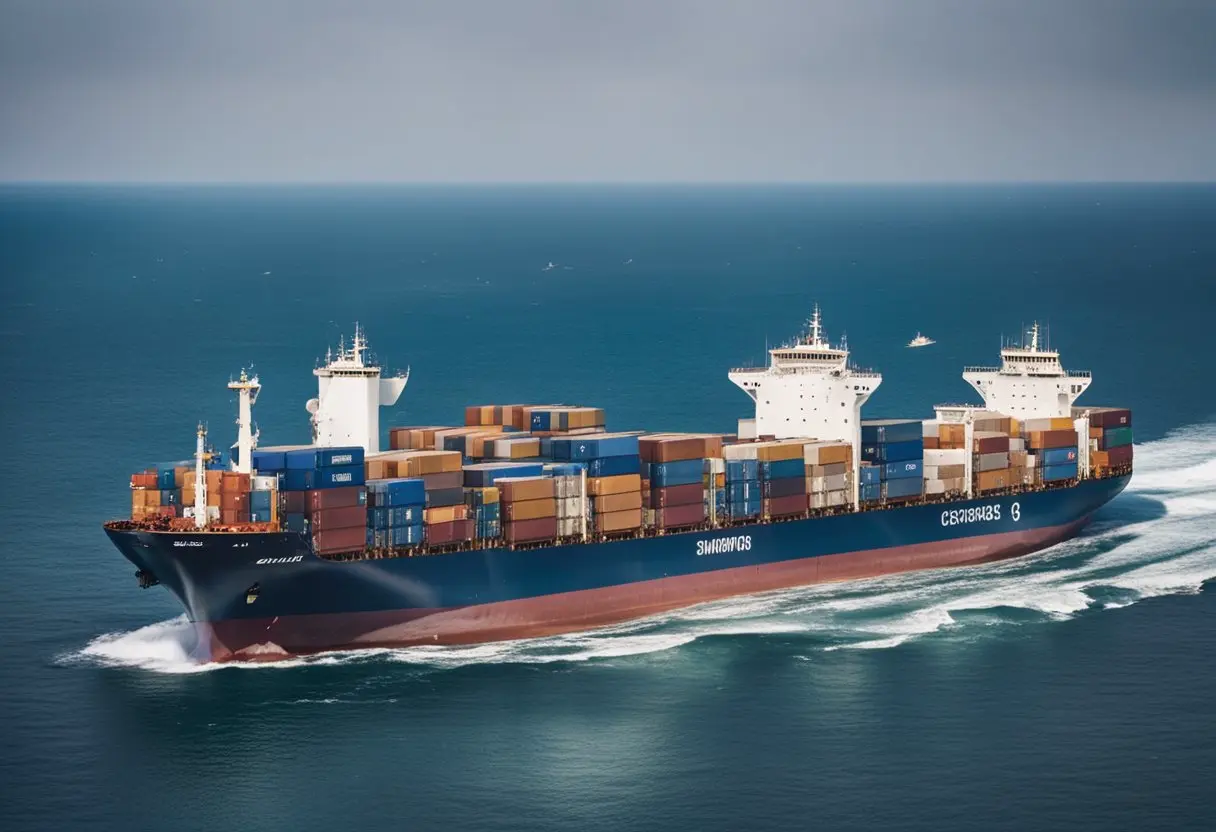
Cargo ships are vessels designed to transport goods and commodities across the world’s waters. They come in different sizes and shapes, each with its unique features and capabilities. In this section, we’ll explore the various types of cargo ships that ply the seas of commerce.
Bulk Carriers
Bulk carriers are cargo ships designed to transport unpackaged bulk cargo such as coal, iron ore, and grain. They are characterized by their large size, high capacity, and single-deck design. Bulk carriers are classified based on their deadweight tonnage (DWT), which refers to the weight of cargo, fuel, water, and stores that a ship can carry. Some of the largest bulk carriers can carry up to 400,000 DWT.
Container Ships
Container ships are specialized cargo ships designed to transport standardized cargo containers of various sizes. These containers can be easily loaded, secured, and stacked on the ship and unloaded at ports worldwide. Container ships are classified based on their TEU (twenty-foot equivalent unit) capacity, which refers to the number of standard 20-foot containers a ship can carry. Some of the largest container ships can carry up to 24,000 TEUs.
Tankers
Tankers are cargo ships designed to transport liquid cargo such as oil, chemicals, and liquefied natural gas (LNG). They are characterized by their cylindrical shape, double hull design, and segregated ballast system. Tankers are classified based on their deadweight tonnage (DWT), which refers to the weight of cargo, fuel, water, and stores that a ship can carry. Some of the largest tankers can carry up to 500,000 DWT.
Reefer Ships
Reefer ships are cargo ships designed to transport perishable cargo such as fruits, vegetables, and meat. They are characterized by their refrigerated cargo holds, which are equipped with temperature and humidity control systems. Reefer ships are classified based on their refrigerated container capacity, which refers to the number of standard refrigerated containers a ship can carry. Some of the largest reefer ships can carry up to 12,000 refrigerated containers.
Ro-Ro Ships
Ro-Ro (roll-on/roll-off) ships are cargo ships designed to transport wheeled cargo such as cars, trucks, and trailers. They are characterized by their large cargo ramps, which allow vehicles to be driven on and off the ship. Ro-Ro ships are classified based on their lane meter capacity, which refers to the length of cargo space available for wheeled vehicles. Some of the largest Ro-Ro ships can carry up to 8,000 lane meters of cargo.
Understanding Maritime Trade Routes
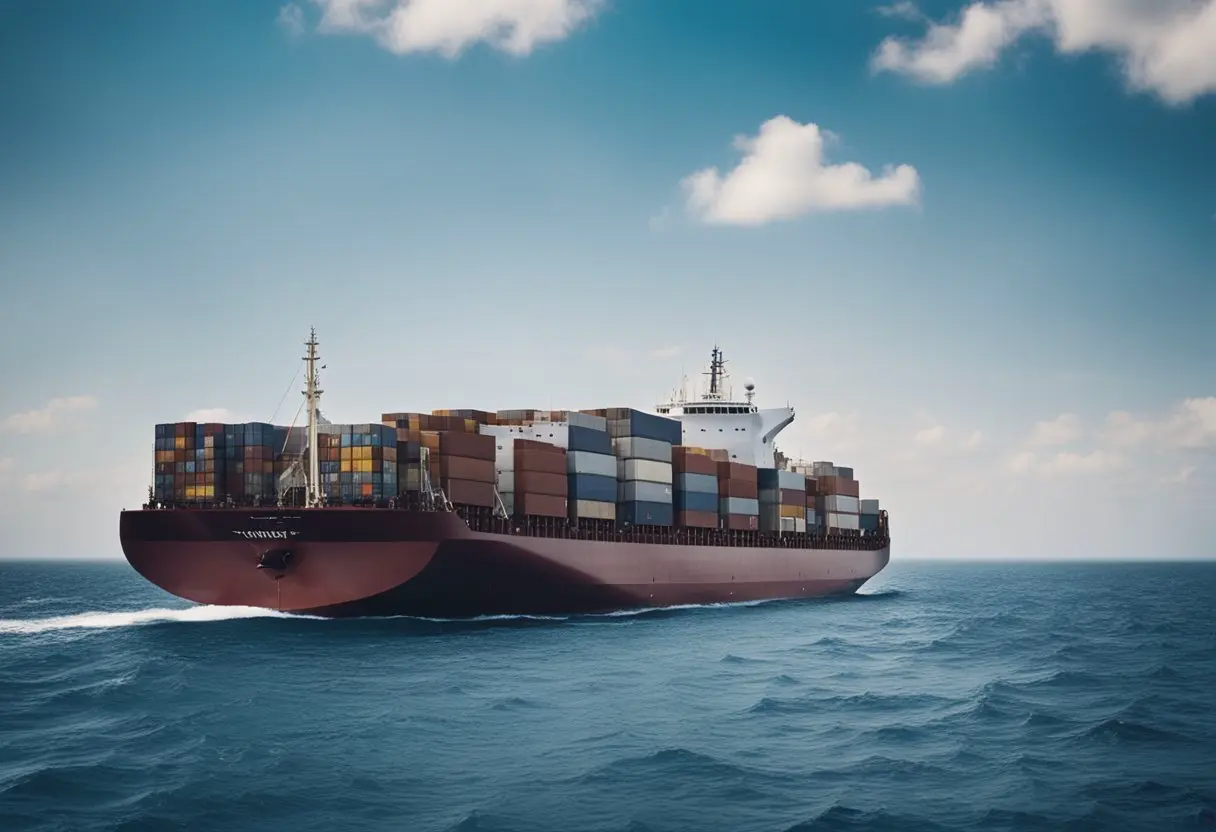
Navigating the seas of commerce requires a deep understanding of the various maritime trade routes. These routes are the lifeline of global trade, connecting countries and continents and facilitating the transportation of goods across vast distances. In this section, we will take a closer look at the major global shipping lanes and strategic maritime choke points.
Major Global Shipping Lanes
The major global shipping lanes are the arteries of world trade, connecting the major ports of the world and facilitating the movement of goods across the oceans. The following are some of the major global shipping lanes:
- Trans-Pacific Route: This route connects Asia with North America and is one of the busiest shipping lanes in the world. It is used to transport a wide range of goods, from electronics to textiles.
- Trans-Atlantic Route: This route connects Europe with North America and is another major shipping lane. It is used to transport a wide range of goods, from automobiles to food products.
- Suez Canal Route: This route connects Europe with Asia and is a crucial shipping lane for the transportation of oil and gas. It is also used to transport a wide range of other goods, including chemicals and machinery.
Strategic Maritime Choke Points
Strategic maritime choke points are narrow waterways that are crucial for the movement of goods and oil across the oceans. These choke points are vulnerable to disruption and can have a significant impact on global trade. The following are some of the most important strategic maritime choke points:
- Strait of Hormuz: This is a narrow waterway that connects the Persian Gulf with the Arabian Sea. It is a crucial shipping lane for the transportation of oil and gas, with more than 20% of the world’s oil passing through this choke point.
- Strait of Malacca: This is a narrow waterway that connects the Indian Ocean with the Pacific Ocean. It is a crucial shipping lane for the transportation of goods, with more than 80% of China’s oil imports passing through this choke point.
- Panama Canal: This is a man-made waterway that connects the Atlantic Ocean with the Pacific Ocean. It is a crucial shipping lane for the transportation of goods, with more than 14,000 ships passing through this canal every year.
Understanding these major global shipping lanes and strategic maritime choke points is crucial for anyone involved in the transportation of goods across the oceans. By understanding these routes, one can plan more efficient and cost-effective shipping routes and avoid potential disruptions.
Cargo Ships Operations
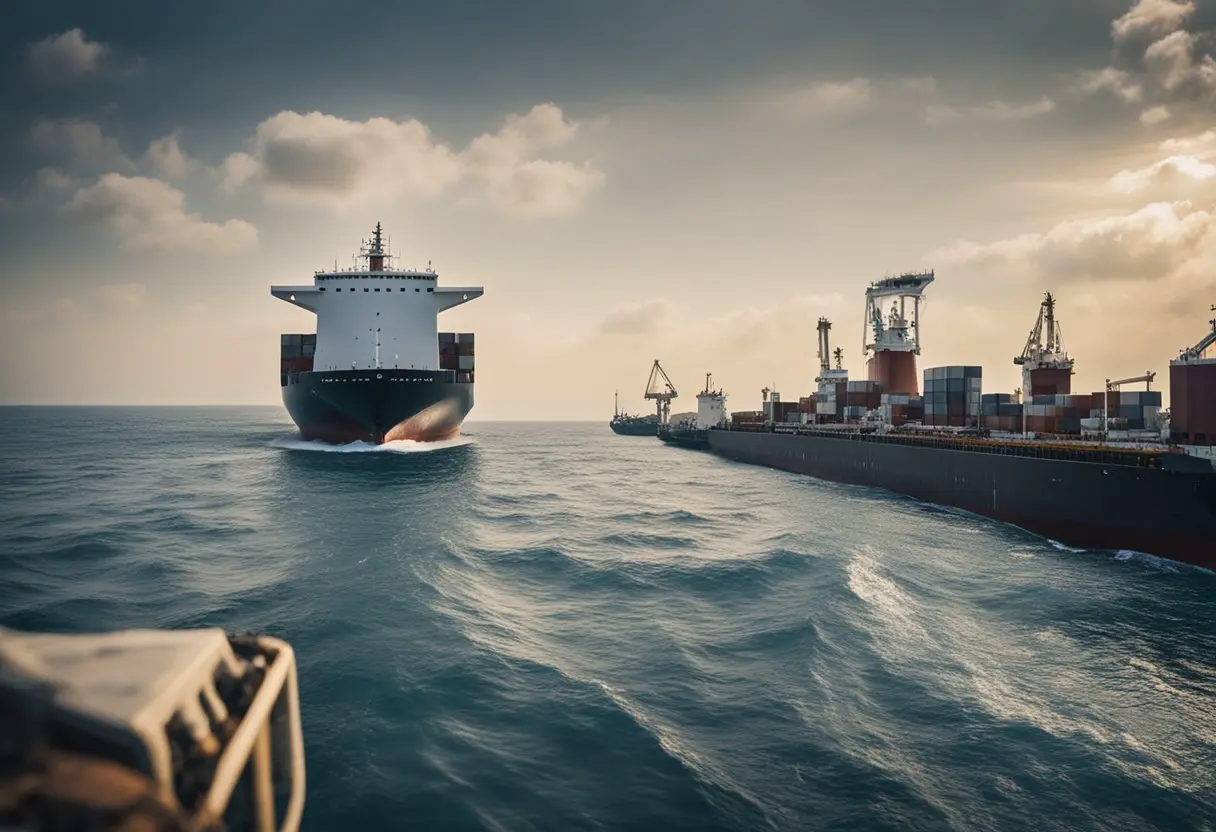
Cargo ships are designed to transport products by sea. Shipowners depend on cargo ships to link economies and promote international trade. These ships store and transport cargo safely between ports and nations. The following subsections describe the most common cargo ship operations.
Loading and Unloading Procedures
Loading and unloading cargo is a crucial process in cargo ship operations. It is essential to adhere to safety protocols to prevent accidents and ensure the cargo is handled properly. The cargo must be loaded and unloaded in a timely and efficient manner to minimize delays and maximize profits.
Cargo Handling and Stowage
Cargo handling and stowage refer to the process of securing and arranging cargo on board the ship. It is crucial to ensure that the cargo is stowed in a way that prevents damage during transit. The cargo must also be secured properly to prevent it from shifting during rough seas.
Ship Navigation and Routing
Ship navigation and routing refer to the process of planning the ship’s course and determining the best route to take. It is essential to consider factors such as weather, sea conditions, and port congestion when planning the ship’s route. The ship’s crew must also be knowledgeable about navigation and routing to ensure the ship arrives at its destination safely and on time.
Cargo ship operations are complex and require a high level of expertise. Shipowners must ensure that their crew is well-trained and knowledgeable about all aspects of cargo ship operations to ensure a successful voyage. By following proper procedures for loading and unloading cargo, handling and stowage, and ship navigation and routing, cargo ships can transport products safely and efficiently across the seas.
Cargo Ship Safety and Regulations
Cargo ships are an integral part of global commerce, transporting goods across the world’s oceans. To ensure the safety and security of the crew, cargo, and the environment, some international regulations and standards must be followed. This section will provide an overview of the most important regulations and safety measures that cargo ships must adhere to.
International Maritime Organization Standards
The International Maritime Organization (IMO) is the United Nations agency responsible for the safety and security of shipping and the prevention of marine pollution by ships. The IMO has developed several international conventions and codes that set the standards for the safety and environmental performance of ships, including cargo ships. The most important of these conventions for cargo ships are the International Convention for the Safety of Life at Sea (SOLAS) and the International Convention for the Prevention of Pollution from Ships (MARPOL).
SOLAS sets out the minimum standards for the construction, equipment, and operation of cargo ships. It covers a wide range of safety issues, including fire protection, life-saving appliances, and cargo-handling equipment. All cargo ships must comply with the SOLAS regulations, and they are subject to regular inspections to ensure compliance.
MARPOL sets out the regulations for the prevention of pollution from ships, including cargo ships. It covers a wide range of environmental issues, including the discharge of oil, chemicals, and sewage into the sea. All cargo ships must comply with the MARPOL regulations, and they are subject to regular inspections to ensure compliance.
Safety Equipment and Procedures
Cargo ships must have a range of safety equipment and procedures in place to ensure the safety of the crew and cargo. This includes life-saving appliances such as lifeboats, life rafts, and life jackets, as well as fire-fighting equipment such as fire extinguishers, hoses, and pumps. Cargo ships must also have procedures in place for emergencies, such as abandon ship drills and fire drills.
Environmental Regulations
Cargo ships must comply with a range of environmental regulations to minimize their impact on the environment. This includes regulations on the discharge of pollutants such as oil, chemicals, and sewage, as well as regulations on the disposal of garbage. Cargo ships must also comply with regulations on the emission of air pollutants, such as sulfur oxides and nitrogen oxides.
In conclusion, cargo ship safety and regulations are essential for the safe and efficient operation of cargo ships. By adhering to international standards and regulations, cargo ships can ensure the safety of their crew, cargo, and the environment.
Ship Registration and Classification
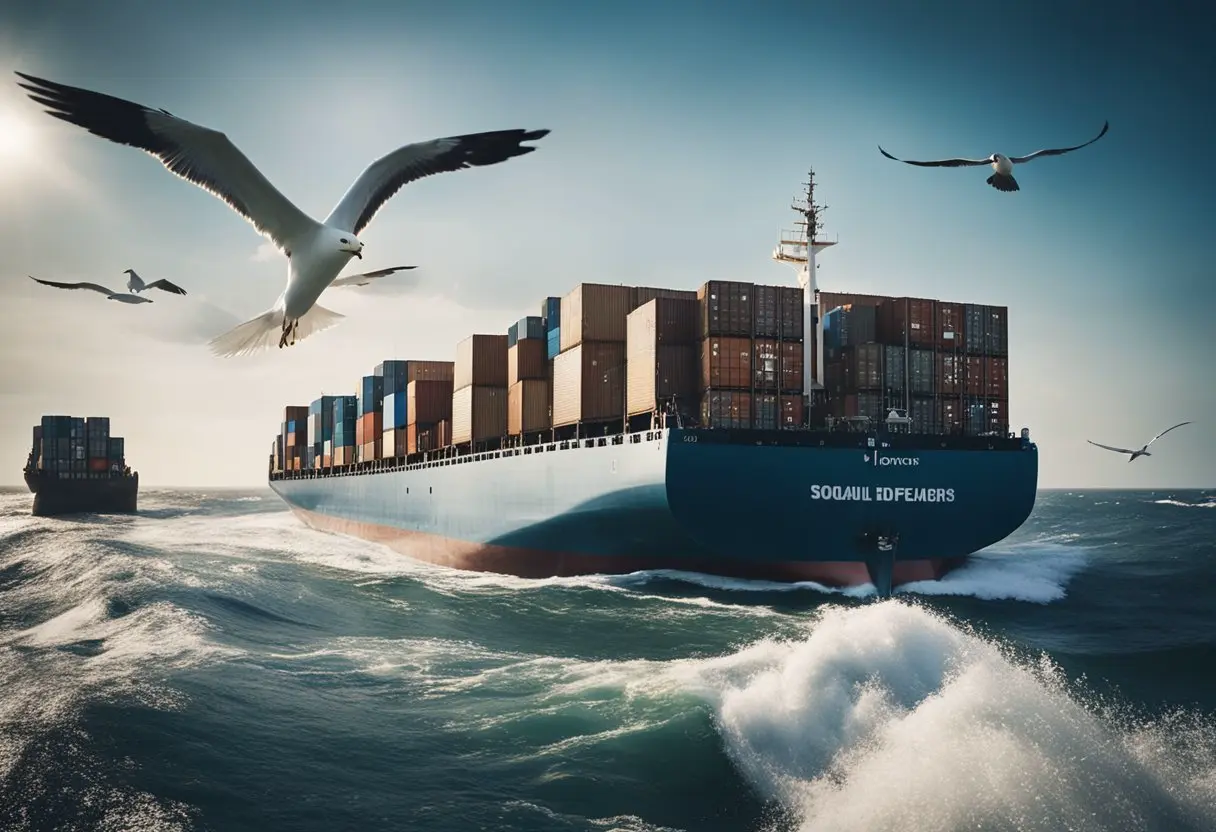
When it comes to navigating the seas of commerce, ship registration and classification are crucial elements. Ship registration is the process of documenting and legally recognizing a vessel as a national entity. On the other hand, ship classification is the process of verifying and certifying the condition, safety, and compliance of ships. In this section, we will delve into the importance of ship registration and classification.
Flag States and Registration
The first step to ship registration is identifying the most suitable flag state for the vessel. Factors to consider when choosing a flag state include the ship’s intended operations, the reputation and credibility of the flag state, tax implications, and specific requirements imposed by different jurisdictions.
Ship registration is important because it provides a legal framework for the vessel’s operations, including the ability to fly the flag of the chosen flag state, obtain protection from the state, and access certain benefits like trade agreements. Additionally, ship registration enables the vessel to comply with international and domestic laws and regulations, including safety and environmental standards.
Classification Societies
Classification societies are independent organizations that verify and certify the condition, safety, and compliance of ships. These societies play a critical role in ensuring the safety and compliance of vessels. They conduct surveys and inspections of ships to ensure that they meet the required standards for design, construction, and maintenance.
Classification societies also provide technical assistance and guidance to ship owners and operators to help them comply with regulations and improve safety. They issue certificates of classification, which are recognized by flag states and port authorities as evidence that the vessel is seaworthy and meets the required standards.
In conclusion, ship registration and classification are essential elements of navigating the seas of commerce. Ship registration provides a legal framework for vessel operations, while classification societies verify and certify the safety and compliance of ships. By understanding the importance of ship registration and classification, ship owners and operators can ensure that their vessels operate safely and efficiently while complying with international and domestic laws and regulations.
Global Ports
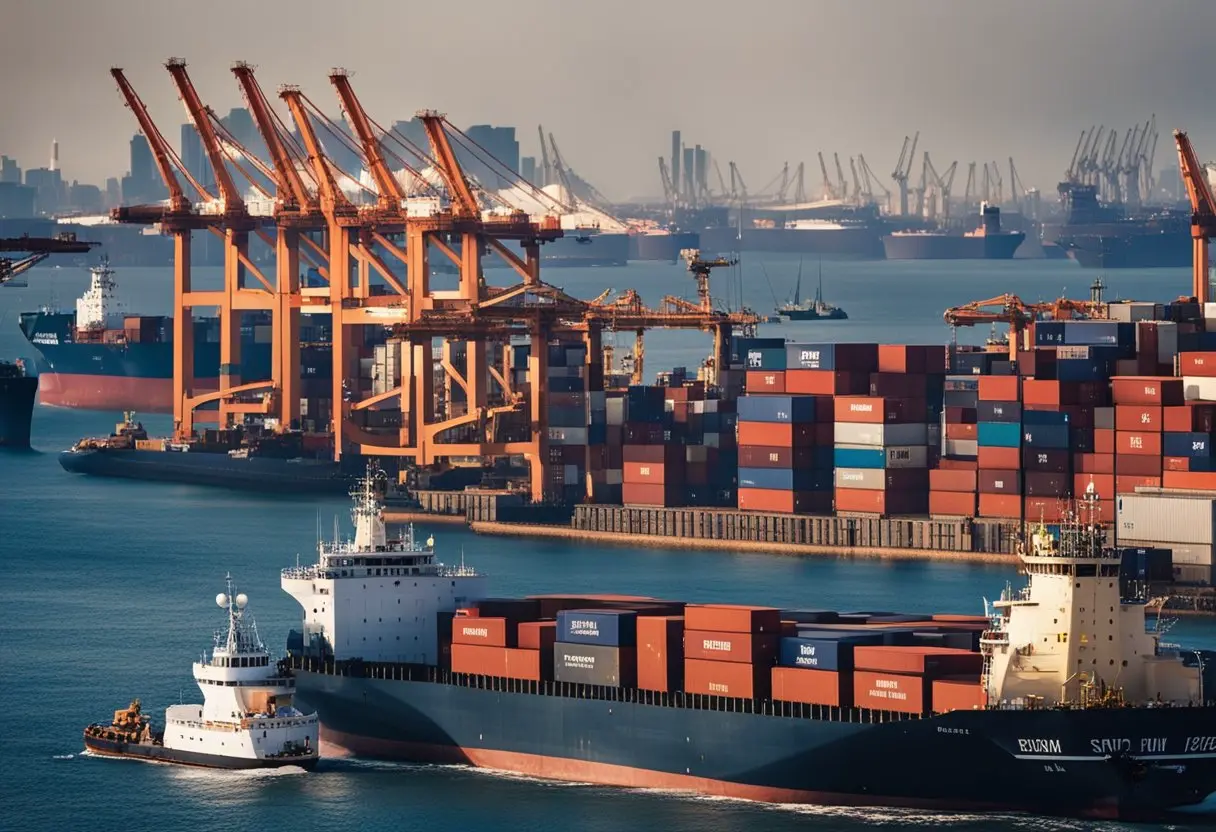
Cargo ships rely on ports as the lifeline of global trade. Ports serve as the gateway for goods to enter and exit countries, making them an essential component of the global economy. Explore some of the world’s most significant ports that play a vital role in the global cargo shipping network.
Port of Shanghai
The Port of Shanghai is the world’s busiest container port, handling over 43 million twenty-foot equivalent units (TEUs) in 2020. Located in the Yangtze River Delta, the port serves as a vital gateway for China’s exports to the rest of the world. The port’s strategic location and modern infrastructure have made it a preferred choice for many shipping lines.
Port of Singapore
The Port of Singapore is one of the world’s largest and busiest ports, handling over 37 million TEUs in 2020. The port’s strategic location at the crossroads of major shipping lanes has made it an essential hub for global trade. The port’s state-of-the-art facilities, including automated terminals and a deep-water port, have made it a preferred choice for many shipping lines.
Port of Rotterdam
The Port of Rotterdam is Europe’s largest port, handling over 14 million TEUs in 2020. The port’s strategic location at the mouth of the Rhine River has made it a vital gateway for goods entering and exiting Europe. The port’s modern infrastructure, including automated terminals and a deep-water port, has made it a preferred choice for many shipping lines.
Port of Los Angeles
The Port of Los Angeles is the largest in the United States, handling over 9 million TEUs in 2020. The port’s strategic location on the West Coast has made it an essential gateway for goods entering and exiting the United States. The port’s state-of-the-art facilities, including automated terminals and a deep-water port, have made it a preferred choice for many shipping lines.
Port of Dubai
The Port of Dubai is the largest in the Middle East, handling over 14 million TEUs in 2020. The port’s strategic location at the crossroads of major shipping lanes has made it an essential hub for global trade. The port’s modern infrastructure, including automated terminals and a deep-water port, has made it a preferred choice for many shipping lines.
These ports are just a few examples of the many significant ports worldwide that play a vital role in the global cargo shipping network. Explore the world’s ports to gain a deeper understanding of the complexity of global trade.
Maritime Communication Systems
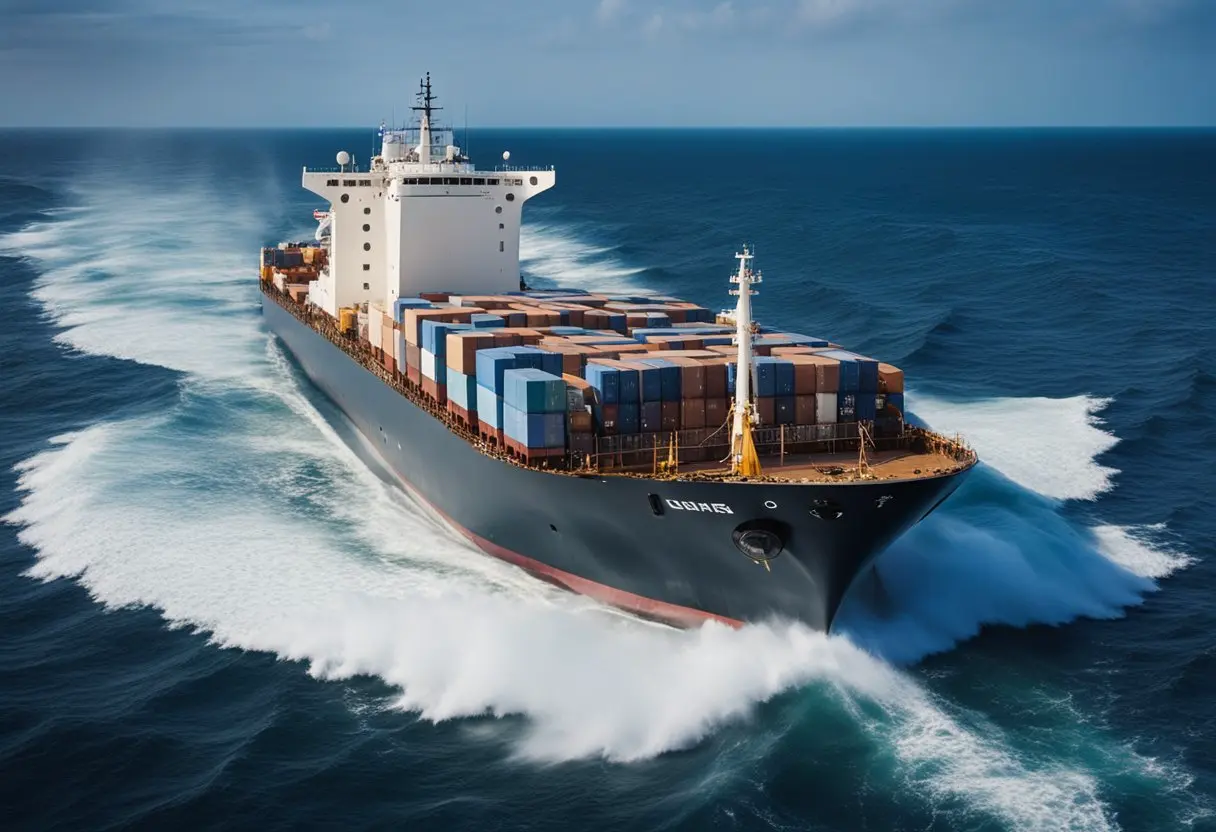
Maritime communication systems are essential for cargo ships to navigate the seas of commerce. These systems enable ships to communicate with other ships, ports, and emergency services. In this section, we will discuss the two main types of maritime communication systems: navigation aids and satellite and radio communications.
Navigation Aids
Navigation aids are used to help ships navigate safely through the sea. They include radar, GPS, and AIS. Radar is used to detect other ships and obstacles in the area. GPS is used to determine the ship’s location, speed, and direction. AIS (Automatic Identification System) is used to transmit and receive information about other ships in the area.
Satellite and Radio Communications
Satellite and radio communications are used for ship-to-ship and ship-to-shore communication. They are also used for emergency calls, weather reports, and navigation information. The most common types of satellite and radio communications used in the maritime industry are VHF, MF/HF, and Inmarsat.
VHF (Very High Frequency) radios are the backbone of marine communication. They provide line-of-sight communication and are used for ship-to-ship and ship-to-shore communication, distress calls, and coordination with harbor authorities. MF/HF (Medium Frequency/High Frequency) radios are used for long-range communication and can transmit signals over hundreds of miles. Inmarsat is a satellite communication system that provides global coverage and is used for voice and data communication.
Cargo ships rely on these communication systems to navigate safely through the seas of commerce. With the help of navigation aids and satellite and radio communications, cargo ships can communicate with other ships, ports, and emergency services, ensuring the safety of the crew and cargo.
Cargo Ship Maintenance and Repair
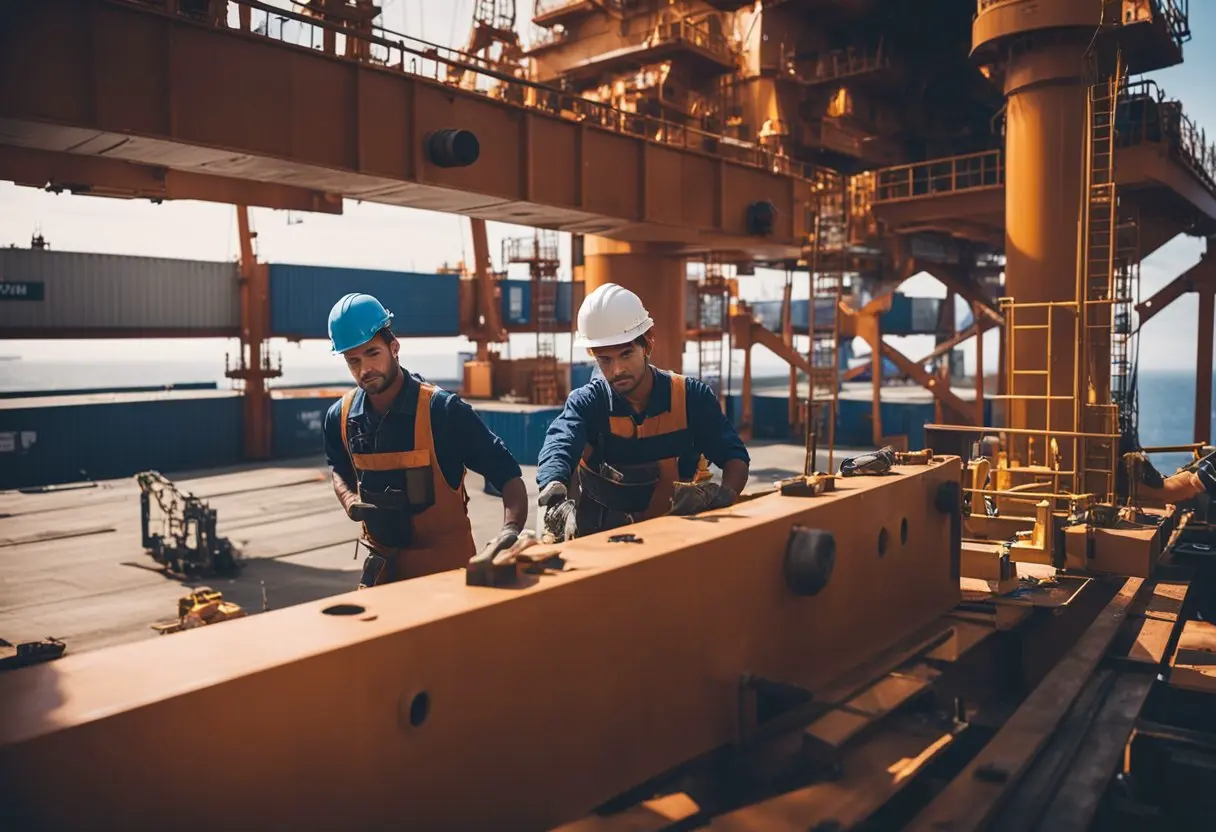
Cargo ships are an essential component of global trade, responsible for transporting goods across the world’s oceans. These ships are designed to withstand the harsh conditions of the sea, but they still require regular maintenance and repair to ensure they operate safely and efficiently.
Maintenance
Maintenance on cargo ships includes routine inspections, cleaning, and repairs. Regular inspections of the ship’s machinery, electrical systems, and hull are necessary to identify any potential issues before they become major problems. Crew members are trained to perform routine maintenance tasks, such as changing filters and lubricating machinery.
In addition to regular inspections, cargo ships undergo scheduled maintenance periods, known as dry dockings. During these periods, the ship is taken out of the water and placed in a dry dock for repairs and maintenance that cannot be performed while the ship is at sea. This includes painting the hull, repairing or replacing damaged parts, and overhauling machinery.
Repair
Despite routine maintenance, cargo ships can still experience unexpected breakdowns or damage while at sea. When this happens, the crew must be prepared to make repairs to keep the ship operational. Common repairs include fixing leaks, replacing damaged parts, and repairing electrical systems.
In some cases, repairs may require the ship to be taken out of service and brought to a shipyard for more extensive repairs. Shipyards are equipped with specialized tools and equipment to repair and maintain cargo ships, including dry docks for larger repairs.
Overall, regular maintenance and timely repairs are essential for keeping cargo ships operating safely and efficiently. By following a strict maintenance schedule and promptly addressing any issues that arise, cargo ship owners can ensure their vessels remain in top condition for years to come.
The Economics of Cargo Shipping
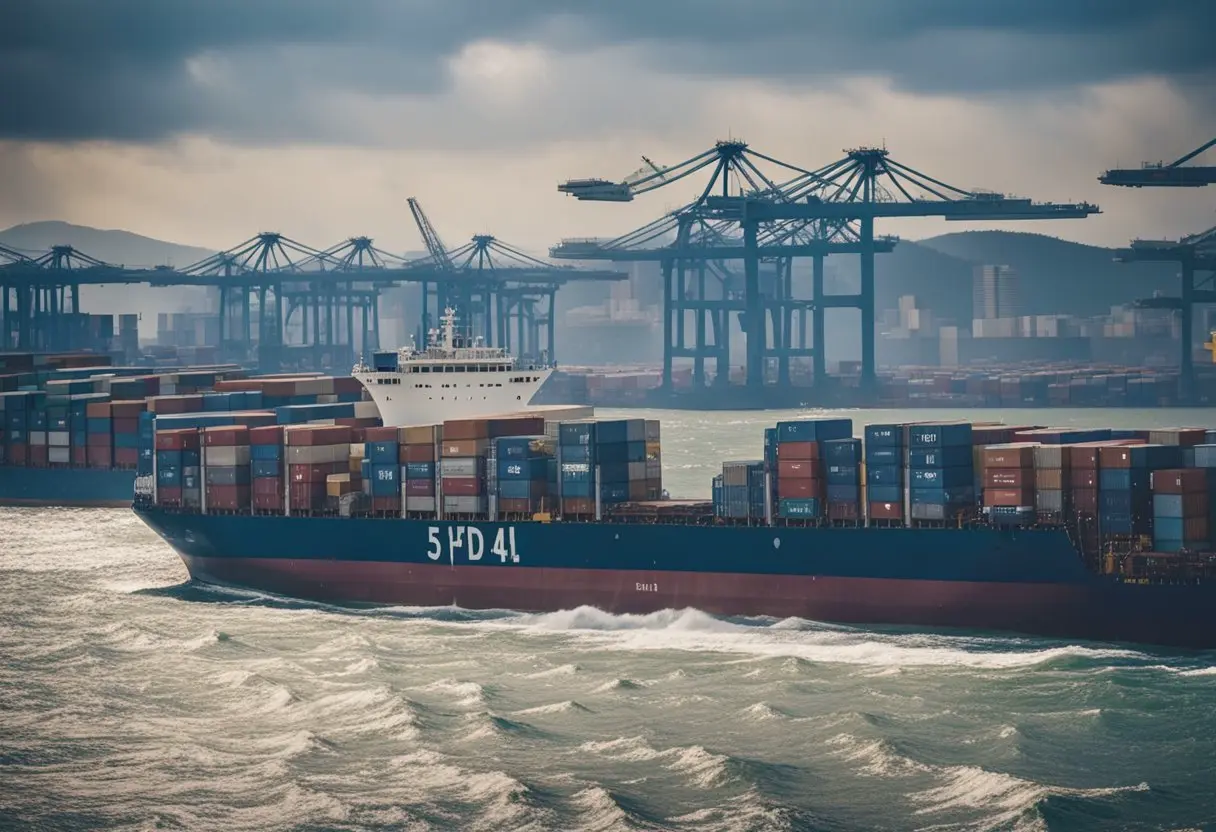
Cargo shipping is a vital component of the global economy. It enables the transportation of goods across oceans via vessels capable of stowing. The cost of shipping is determined by several factors, including the type of cargo, the distance traveled, and the size of the vessel.
Cost Factors in Shipping
The cost of shipping is influenced by several factors, including fuel prices, labor costs, and insurance. Fuel prices are a significant factor in determining the cost of shipping, as ships require large amounts of fuel to travel long distances. Labor costs are another significant factor, as shipping companies must pay their crews for their services. Insurance is also a critical cost factor, as shipping companies must insure their vessels against damage or loss.
To reduce costs, shipping companies often use larger vessels to transport goods. Larger vessels can carry more cargo, reducing the number of trips required to transport goods. This reduces fuel costs and labor costs, as fewer trips mean fewer crew members are required.
The Role of Freight Markets
Freight markets play a critical role in the economics of cargo shipping. Freight markets are markets where shipping companies can buy and sell cargo space on vessels. These markets are essential for shipping companies, as they allow them to optimize their operations by buying and selling cargo space as needed.
Freight markets are also crucial for shippers, as they provide access to a wide range of shipping options at competitive prices. Shippers can use freight markets to find the best shipping options for their needs, reducing their costs and improving their efficiency.
In conclusion, the economics of cargo shipping are complex and multifaceted. The cost of shipping is influenced by several factors, including fuel prices, labor costs, and insurance. Freight markets play a critical role in the economics of cargo shipping, providing shipping companies and shippers with access to a wide range of shipping options at competitive prices.
Emerging Trends in Cargo Shipping
Technological Advancements
The cargo shipping industry is rapidly evolving due to advancements in technology. The implementation of digitalization, automation, and artificial intelligence (AI) has improved efficiency, reduced costs, and increased safety in cargo shipping. With the help of blockchain technology, cargo tracking and documentation have become more secure, transparent, and efficient. Shipping companies are also investing in autonomous ships, which can operate without a human crew, reducing the risk of accidents and increasing efficiency.
Another technological advancement is the use of drones for cargo delivery. Drones can reach remote locations and deliver cargo faster than traditional shipping methods. They are also more environmentally friendly, as they produce fewer emissions and require less fuel.
Sustainability and Green Shipping
Sustainability and green shipping have become increasingly important in the cargo shipping industry. Shipping companies are investing in eco-friendly technologies to reduce their carbon footprint and comply with environmental regulations. One such technology is the use of alternative fuels, such as biofuels, hydrogen, and electric power. These fuels produce fewer emissions and are more sustainable than traditional fossil fuels.
Another eco-friendly technology is the use of wind-assisted propulsion systems, such as sails and rotors. These systems harness the power of wind to reduce fuel consumption and emissions. Additionally, shipping companies are investing in waste management systems to reduce pollution and waste in the ocean.
In conclusion, the cargo shipping industry is constantly evolving, and technological advancements and sustainability initiatives are driving this change. With the implementation of these emerging trends, the industry can become more efficient, safe, and environmentally friendly.
Frequently Asked Questions
What are the essential responsibilities of a cargo ship captain?
The captain of a cargo ship is responsible for the overall safety and management of the ship and its crew. They oversee the loading and unloading of cargo, ensure the ship is properly maintained, and navigate the ship to its destination. Additionally, they are responsible for making decisions during emergencies and communicating with other ships and port authorities.
How is a cargo ship steered and what commands are used?
A cargo ship is steered using a large wheel called the helm, which is connected to the rudder. The captain or helmsman gives commands to steer the ship using a series of orders such as “hard to port” or “hard to starboard”. These commands are given in degrees, such as “ten degrees to port” or “twenty degrees to starboard”.
What constitutes the marine industry and what are some key examples?
The marine industry includes a wide range of businesses involved in the transportation of goods and people by sea. Some examples include cargo shipping companies, cruise lines, port authorities, and marine insurance providers. Additionally, the industry includes businesses involved in shipbuilding, repair, and maintenance.
What are the typical earnings for crew members on cargo ships?
The earnings of crew members on cargo ships vary depending on their position and experience. According to one source, an Ordinary Seaman can earn an average hourly wage of $15.29, while a Chief Engineer can earn an average salary of $108,000 per year.
Is it possible for passengers to travel on cargo ships, and what are the costs?
Yes, passengers can travel on cargo ships. However, this type of travel is not as common as commercial passenger cruises. The cost of traveling on a cargo ship varies depending on the route, duration, and accommodations. According to one source, fares can range from $100 to $200 per day, and the journey can take anywhere from a few days to several weeks.
What terminology is used to describe the steering wheel of a pirate ship?
The steering wheel of a pirate ship is commonly referred to as the helm or the ship’s wheel. It is used to control the direction of the ship and is typically located on the ship’s quarterdeck.
